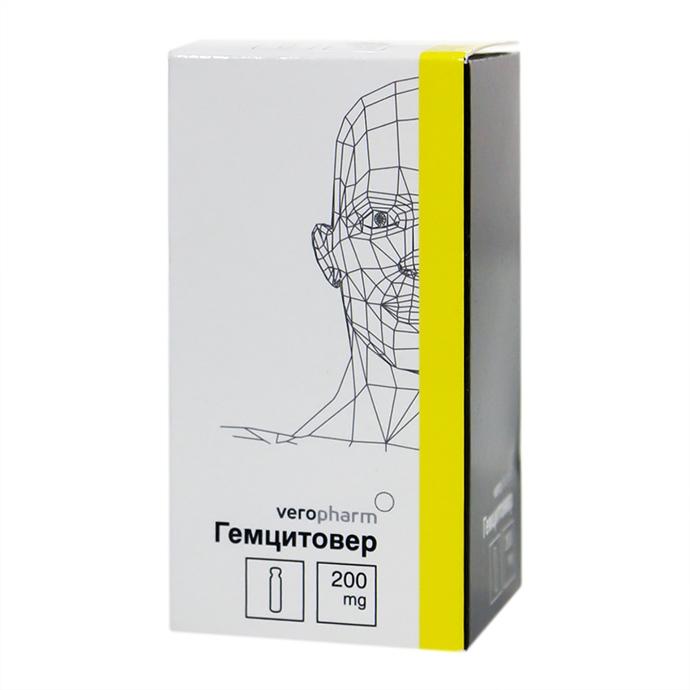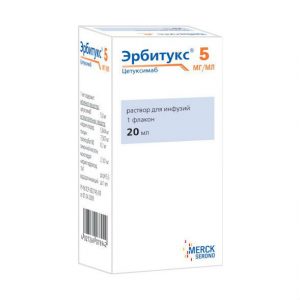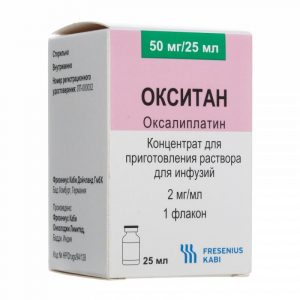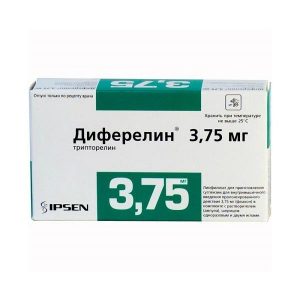Description
Latin name
Gemcitover
Release form
Lyophilisate for the preparation of 200 mg infusion solution in vials.
Packaging
1 bottle with instructions for use in a cardboard bundle.
Pharmacological action
Gemcitover – an antitumor agent, antimetabolite.
Gemcitabine is an antimetabolite group of pyrimidine analogues. Suppresses synthesis of deoxyribonucleic acid (DNA). It shows cyclospecificity, acting on cells in phases S and G1 / S. It is metabolized inside the cell under the action of nucleoside kinases with the formation of active diphosphate and triphosphate nucleosides. Diphosphate nucleosides inhibit ribonucleotide reductase, which is the only enzyme that catalyzes the formation of deoxynucleoside triphosphates necessary for DNA synthesis. Triphosphate nucleosides actively compete with deoxycytidine triphosphate for incorporation into DNA and RNA molecules. After the intracellular metabolites of gemcitabine are inserted into the DNA chain, another additional nucleotide is added to its growing strands, which leads to complete inhibition of further DNA synthesis and programmed cell lysis, known as apoptosis.
Indications
Non-small cell lung cancer
Breast cancer
Bladder cancer
Ovarian cancer
Pancreatic cancer
Cervical cancer, if not used in combination with other and biliary tract cancer.
Contraindications
hypersensitivity to gemcitabine or other components of the drug Gemcitover,
pregnancy and lactation.
Caution: in case of impaired liver and / or kidney function, inhibition of bone marrow hematopoiesis (including against the background of concomitant radiation or chemotherapy), with simultaneous radiation therapy, acute infectious diseases of a viral, fungal or bacterial nature (including chicken pox, shingles).
Use in pregnancy and lactation
The safety of gemcitabine during pregnancy in humans has not been studied. In experimental studies, it is shown that gemcitabine has an embryo- and fetotoxic effect, negatively affects the course of pregnancy and postnatal development. Avoid the use of gemcitabine during pregnancy. Women of childbearing age during treatment should use reliable methods of contraception. If necessary, use during lactation should decide whether to stop breastfeeding.
Composition
Gemcitover lyophilisate for solution for infusion
1 vial contains: active substance: gemcitabine hydrochloride in terms of gemcitabine – 200 mg
excipients: mannitol, sodium acetate, 1 M solution.
Dosage and administration
Gemcitover is administered intravenously dropwise for 30 minutes.
Non-small cell lung cancer (locally or disseminated) Monotherapy.
The recommended dose of the drug is 1000 mg / m2 once a week for 3 weeks, followed by a weekly break, every 28 days. Combination therapy
The recommended dose is 1250 mg / m2 on days 1 and 8 of each 21-day cycle or 1000 mg / m2 on days 1, 8 and 15 of each 28-day cycle. Cisplatin is administered at a dose of 70 mg / m2 on the 1st day of the cycle after gemcitabine infusion with hyperhydration.
Breast cancer (locally or disseminated)
Monotherapy.
When the disease progresses after the first line of therapy, including or without anthracyclines (with contraindications for the use of anthracyclines), the recommended dose is 1000-1200 mg / m2 on days 1, 8 and 15 every 28 days.
Combination therapy.
As a first-line therapy, with the progression of neoadadovanny therapy, with the inclusion of anthracyclines. The recommended dose of the drug is 1250 mg / m2 on days 1 and 8 in combination with paclitaxel at a dose of 175 mg / m2 about 3 hours after the administration of gemcitabine on day 1 of every 21 day cycle.
Bladder cancer (locally, disseminated, or superficial)
Monotherapy.
The recommended dose is 1250 mg / m2 on days 1, 8 and 15 every 28 days.
Combination therapy.
The recommended dose of the drug is 1000 mg / m2 – in 1, Days 8 and 15 in combination with cisplatin, which is administered at a dose of 70 mg / m2 immediately after gemcitabine infusion on the 1st or 2nd day of each 28-day cycle.
Intravesical chemotherapy. The recommended dose of the drug is 2000 mg. To obtain a solution for installations, the drug is dissolved in 100 or 50 ml of a 0.9% sodium chloride solution to a concentration of 20 to 40 mg / ml. The exposure of the drug is 60 minutes. It is administered once a week for 6 weeks. The concentration of the solution should not exceed 40 mg / ml.
Epithelial ovarian cancer (locally or disseminated).
Monotherapy.
The recommended dose of the drug is 800-1250 mg / m2 on days 1, 8 and 15 every 28 days.
Combination therapy.
The recommended dose of the drug is 1000 mg / m2 on days 1 and 8 in combination with carboplatin, which is administered immediately after gemcitabine infusion on day 1 of every 21-day cycle.
Pancreatic cancer (locally or disseminated).
Monotherapy.
The recommended dose is 1000 mg / m2 once a week for 7 weeks, followed by a weekly break. Subsequent cycles should consist of infusions carried out once a week for 3 weeks, followed by a weekly break.
Cervical cancer (locally or disseminated).
Combination therapy.
For locally advanced cancer with sequential chemoradiotherapy (neoadjuvant) and for disseminated cancer, gemcitabine is administered at a dose of 1250 mg / m2 on days 1 and 8 of the 21-day cycle. Cisplatin is administered after administration of gemcitabine at a dose of 70 mg / m2 on 1 day of the cycle every 21 days against the background of hyperhydration.
In case of locally advanced cancer with simultaneous chemoradiotherapy 1 time per week 1-2 hours before the start of radiation therapy, gemcitabine is administered at a dose of 125 mg / m2 followed by (immediately after gemcitabine administration) administration of cisplatin at a dose of 40 mg / m2.
If hematologic toxicity develops, the dose of gemcitabine can be reduced, or its administration can be delayed in accordance with the following scheme:
Absolute granulocyte count (in 1 μl) Platelet count (in 1 μl)% of the previous dose
> 1000and> 100000100
500- 1000 or 50000-10000075
<500 or <50000 Postpone the administration of To detect non-hematologic toxicity, regular examination of the patient and monitoring of liver and kidney function are necessary. Depending on the degree of toxicity, the dose can be reduced stepwise during each cycle or with the start of a new cycle. The decision to postpone the next administration of the drug should be based on the doctor s clinical assessment of the dynamics of toxicity. Special patient groups Elderly patients: There is no evidence to suggest that elderly patients need to adjust the dose, although gemcitabine clearance and elimination half-life vary with age. Patients with impaired liver and kidney function: gemcitabine should be used with caution in patients with hepatic impairment or impaired renal function, since there are no sufficient data on the use of the drug in this category of patients. Mild or moderate severity of renal failure (creatinine clearance from 30 ml / min to 80 ml / min) does not significantly affect the pharmacokinetics of gemcitabine. Children: The use of gemcitabine in children has not been studied. Side effects From the respiratory system: rarely – bronchospasm, shortness of breath. From the side of the central nervous system and peripheral nervous system: rarely – drowsiness, weakness, paresthesia. From the hemopoietic system: leukopenia, thrombocytopenia, anemia. Dermatological reactions: skin rash, itching, alopecia, stomatitis rarely – peeling, vesicular rash, eczema. On the part of laboratory parameters: a transient increase in the activity of hepatic transaminases, alkaline phosphatase, an increase in the concentration of bilirubin in the plasma. On the part of the cardiovascular system: rarely – arterial hypotension, pulmonary edema in isolated cases – myocardial infarction, arrhythmia. From the digestive system: nausea, vomiting, diarrhea rarely – constipation. From the urinary system: proteinuria, hematuria rarely – peripheral edema in isolated cases – renal failure. Other: flu-like syndrome. Drug Interaction Gemcitover has a radiosensitizing effect, therefore, when using the drug on the background of radiation therapy, one can expect an increase in radiation reactions. Reduces the production of antibodies and enhances side effects with the simultaneous use of inactivated or live viral vaccines (the interval between the use of drugs should be from 3 to 12 months). Immunosuppressants (azathioprine, chlorambucil, glucocorticosteroids, cyclophosphamide, cyclosporin, mercaptopurine) increase the risk of infection. Overdose Symptoms: myelosuppression, paresthesia, severe skin rash. Treatment: There is no specific antidote. In case of suspected overdose, the patient should be under constant medical control, including the calculation of the blood formula, if necessary, symptomatic treatment. Storage conditions In a dry, dark place at a temperature of 15 to 30 ° C. Keep out of the reach of children. Expiration 2 years. Do not use after the expiry date stated on the packaging. Deystvuyuschee substances gemcitabine Conditions of supply of Pharmacy Prescription Lans-Farm, Russia




